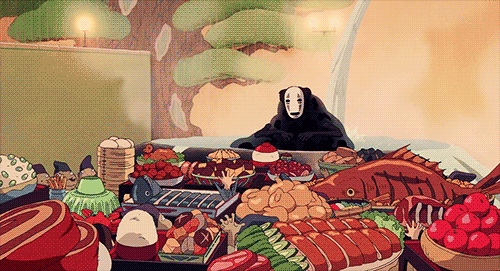
Last Thursday evening I had the pleasure of attending an action-packed (!) triple (!) sneak (!) peek (!) of three exhibits debuting at the Asian Art Museum: Divine Bodies (open March 9th through July 29th), A Guided Tour of Hell (April 20th through September 16th), and Testimony (April 6th through June 10th). All three shows are fascinating and unique in their own right, yet connect through their unifying themes of body, identity, and the search for meaning.
But what really got me interested in this event was the promise of boba tea and Korean fried chicken (more on that later)...
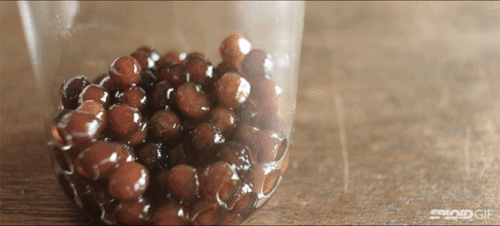
Divine Bodies is a beautiful showcase of sculptures, paintings, photography and video weaved together through age-old questions of mortality, transcendence, the sacred and cartoons—okay, not exactly, but the mixture of historical and contemporary art (including old photographs of devotional structures reworked with cheeky doodles and funny captions by photographer Vivan Sundaram) create an interesting blend of old and new, divine and mortal, reverent and playful.
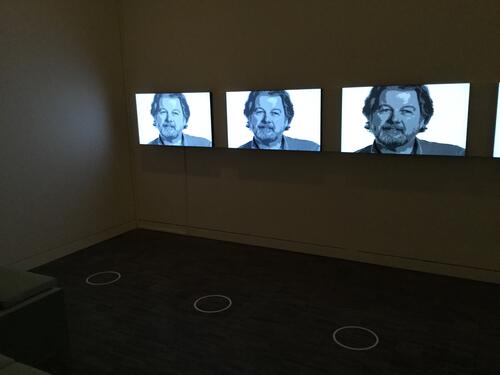
Entering the exhibit, we were first ushered to stand in front of small screens playing interviews of hundreds of people contemplating life, death, and the inevitability of change. The audio was designed to whisper into your ear from above if you stand exactly in the right spot, which gave a eerie and unsettling effect.
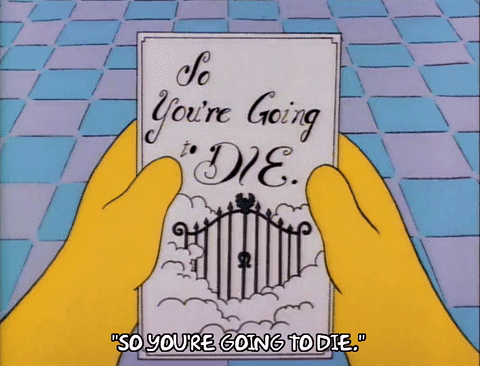
Love, the Asian Art Museum
There is so much more to Divine Bodies than can be relayed here. Photography, sculptures, paintings and apt quotations are just the surface of this wonderful exhibit.
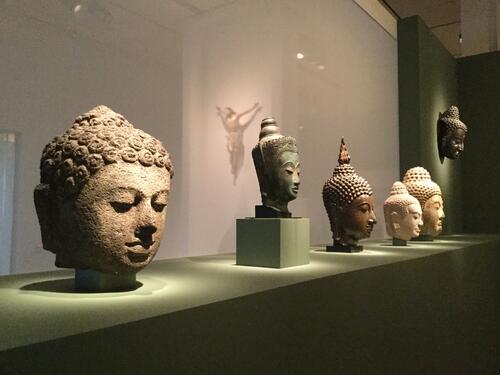
An arrangement of Buddha heads collected from across southern Asia, from more than 1500 years ago until the 1300s
The space has been masterfully set by co-curators Qamar Adamjee, Jeffrey Durham, and Karin G. Oen to introduce both historical and religious context while endowing the rooms with a sense of timelessness and cohesion; big questions surround this exhibit, yes, but they are questions we’ve all asked, no matter where we’re from or when we lived.
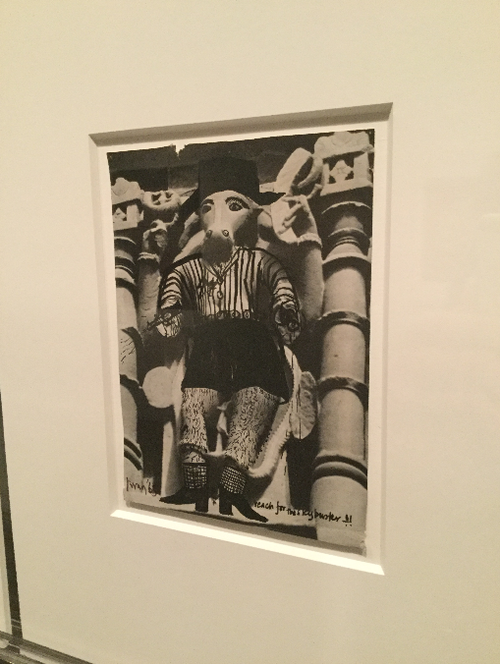
Vivan Sundaram’s doodles challenge traditional conceptions of the sacred.
Some photographs are less playful than Vivan Sundaram’s, including Gauri Gill’s series Traces and Birth, which captures the intense process of birth as a midwife delivers her granddaughter in the remote deserts of Rajasthan. The pictures are very direct. Despite their being devoid of any traditional religious imagery, their seriousness implies and elicits a kind of reverence for the observer.
There was so much to see, but eventually we had to move on. Next, we took an escalator up to Hell...er, A Guided Tour of Hell, to be more precise.
This is an exhibition of 22 acrylic paintings by Tibetan thangka painter Pema Namdol Thaye; the inspiration for the work came from American-born Buddhist practitioner and teacher Samuel Bercholz after having a near-death experience.
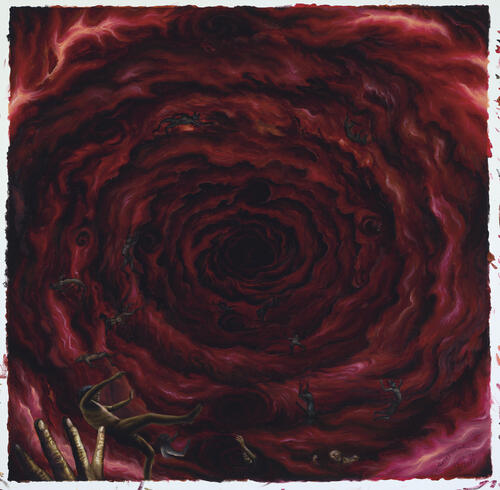
3. Gates of Hell, Pema Namdol Thaye
After suffering from a fatal heart attack during which Bercholz was technically pronounced dead, he experienced powerful visions of “Hell”—fantastical landscapes populated by demons, gods, and other people suffering. Later, after his journey back into this world, he relayed the experience to Thaye and tasked him with constructing a visual representation.
Fans of graphic novels should take note—Thaye’s love of this genre heavily influenced the work, fusing with the artist’s background as a thangka painter to develop a vivid, hallucinogenic style.
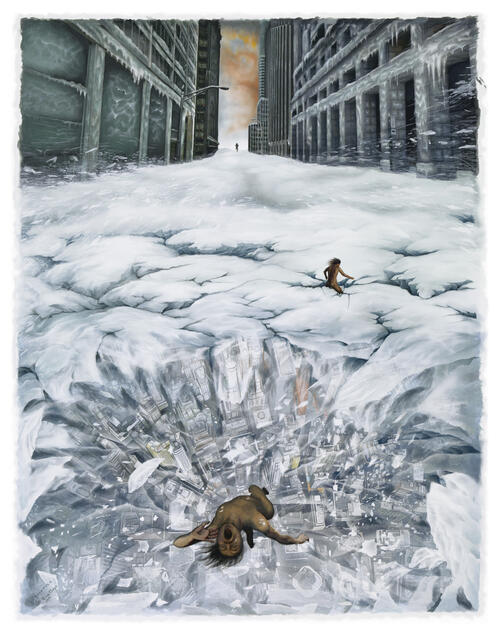
16. Triptych, Pema Namdol Thaye
Characters you may come across as you read each of the 22 “panels” are suicide bombers, warlords, dictators, scientists, socialites, and gods and goddesses. The narrative ties closely with traditional notions of karmic suffering, yet is presented with a totally contemporary, even Western aesthetic. Like Divine Bodies, A Guided Tour of Hell playfully blurs the boundaries between established cultural dichotomies without, in this writer’s humble opinion, disrespecting the concepts. There’s some Dante, some Bosch, a little Blake, but all of it is standing upon prominent Buddhist philosophy, and based entirely on Bercholz’s own, unique, near-death experience. Plus, there’s a lot of action and adventure and a pretty satisfying “end” (Bercholz survived the ordeal, after all).
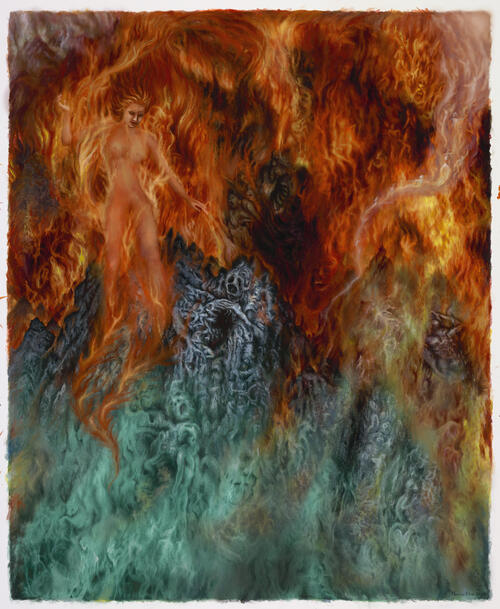
20. Transcend, Pema Namdol Thaye
Before the night was over, I was privileged to make one last stop over to Testimony, an exhibit chronicling the lived experiences of ten documented and undocumented immigrants living in the Bay Area by San Francisco-based artist Eliza Gregory.
After demon battles and ancient sculptural gods provoking such big-picture questions, Testimony was the perfect way to end the night, grounding these ideas in concrete, contemporary, in-your-face real ways. A small room comprised of textual accounts, quotes, and poignant photography, this exhibit invites you to learn briefly about a diverse group of people, all with endearing, individual voices, and powerful stories.
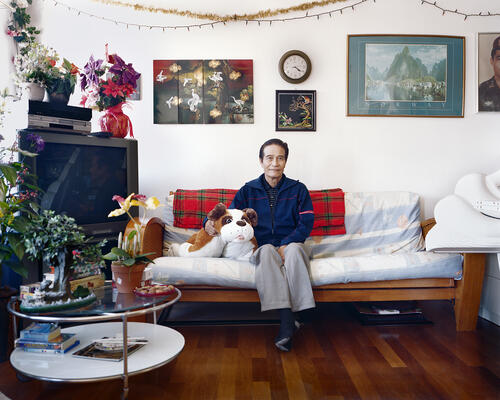
Khanh, San Francisco, 2017
Perspectives are expanded and the world is made somehow both a little bit bigger and more intimate after just a few short minutes in this room. None of the stories feel didactic or staged—everybody truly sounds authentic, different from one another, and immensely engaging; I wanted to learn so much more about each of these people! Those that feel the same will be happy to know printed broadsheets with full interviews of each participant will be available and free for anyone to take home.
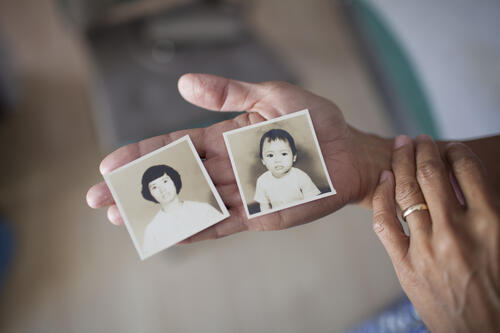
Passport Pictures of Nancy and Her Mother, San Francisco, 2017
I highly recommend Testimony for anyone, but especially Bay Area residents (the Asian Art Museum will be its only venue!). This exhibit not only achieves a true sense of intimacy but of realness—these people are neighbors and members of the same community, and their experiences, as unique as each one is, have an uncanny, resonant effect on anybody who knows and lives in these same places. I was so thrilled to end my night on such a relevant note that tied in surprisingly well with Divine Bodies and A Guided Tour of Hell.
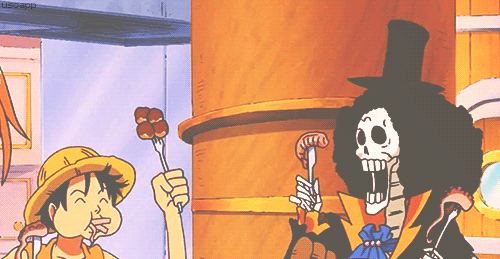
Now, I believe I mentioned something about food earlier.
As if three new exhibits weren’t enough, the Asian Art Museum’s refurbished cafe, Sunday at the Museum (part of the museum’s ongoing transformation project—new rooftop terrace coming mid-2019!), catered the event with boba tea (!), miso avocado toast (!!!), Korean fried chicken sandwiches (!!!!), along with other amazing bites.
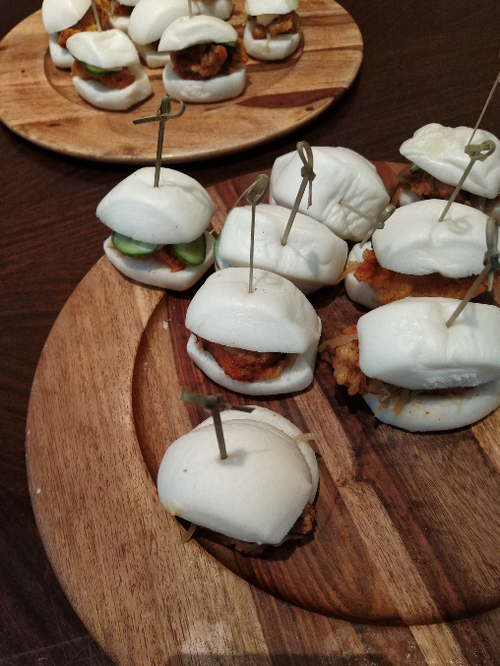
Korean Fried Chicken Pop-Up AKA “Sunday Bird”
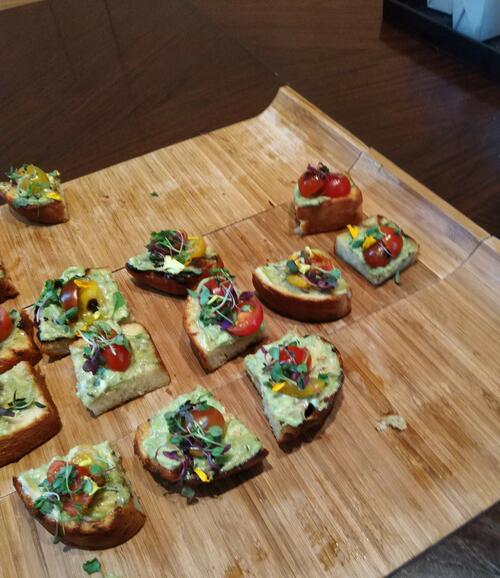
Miso Avocado Toast AKA Holy Sh**
Needless to say (oh, we need to say it), it was absolutely delicious. New York City hot-shot chef Deuki Hong has decided to grace San Francisco with his presence by running the museum’s new cafe alongside Andrew Chau and Bin Chen of Boba Guys. Hong’s menu will include a seasonal rotation of bahn mi, dosa, soup dumplings, jianbing (Chinese breakfast crepes), as well as sommelier-style tea service for handcrafted hot and cold brews.
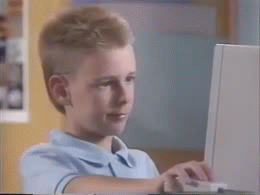
Don’t bother reading any further—the cafe already opened last month, so drop what you’re doing and hit up the Asian Art Museum ASAP. Check out these three fabulous new exhibits and end your day with something delicious.
Comments (2)

Wow, wish I had taken my wife here!










Art is always about beauty and money.